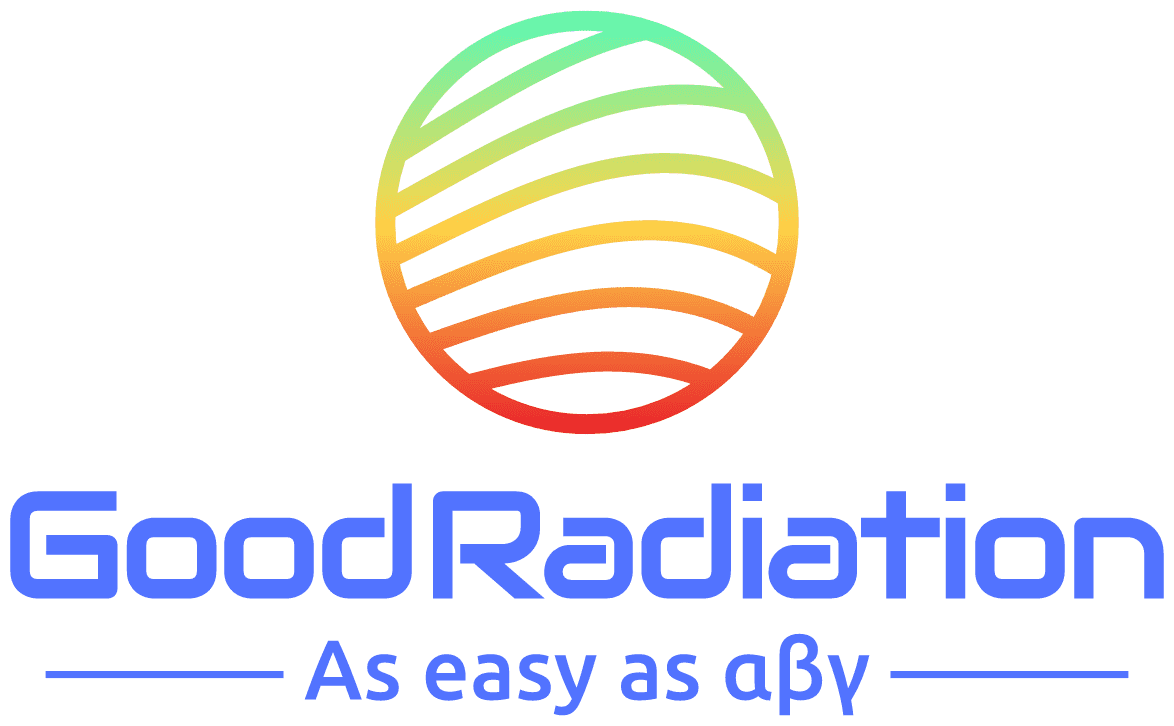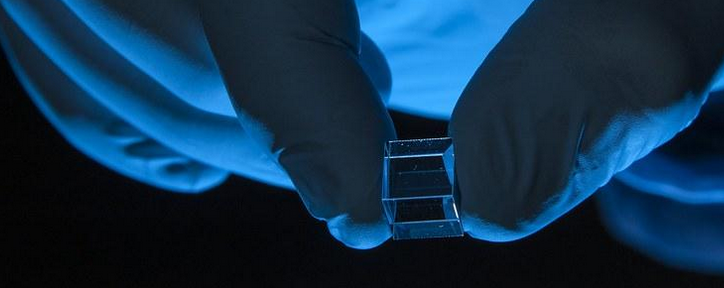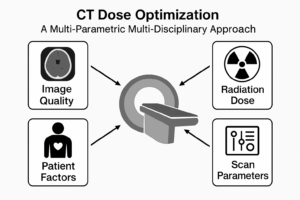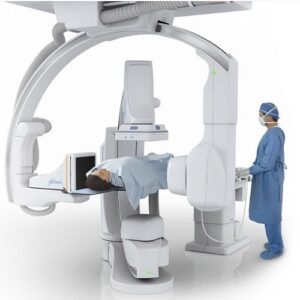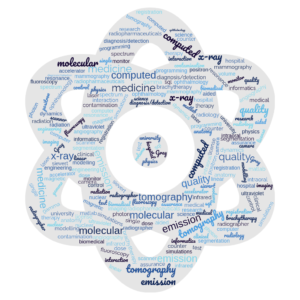What are radiation detectors?
Scintillation crystals are an essential component in radiation detection, serving critical roles in fields like medical imaging, radiation safety, and scientific research. These specialized materials have transformed how we detect and measure radiation, enabling advancements in technology and safety. As these devices become more accessible to hobbyists and enthusiasts, it is crucial to understand their applications, limitations, and potential for innovation. Beyond professional use, these tools also provide opportunities for education and exploration, sparking interest in nuclear science among the public.
This article explores the types of radiation detectors, with a focus on scintillation detectors, and evaluates consumer-grade devices to help readers decide whether these tools are worth the investment.
In general there are 4 main types of radiation detectors:
1. Gas-Filled Detectors
- Principle: Detect radiation by ionization of gas within a chamber.
- Examples: Geiger-Müller (GM) counters, ionization chambers, proportional counters.
- Applications:
- GM counters for contamination monitoring.
- Ionization chambers for dose measurement in radiology (Automatic Exposure Control System).
- Radionuclide calibrators to measure activity of various radiopharmaceuticals prior to injection
- Advantages: Durable, cost-effective, and easy to use for general-purpose radiation detection.
- Limitations: Limited sensitivity and energy resolution compared to other types. Despite their limitations, gas-filled detectors remain a cornerstone in radiation detection due to their simplicity and reliability in field conditions.
2. Semiconductor or Solid-state Detectors
- Principle: Radiation creates electron-hole pairs in a semiconductor material, producing a measurable electrical signal.
- Examples: Cadmium Zinc Telluride (CdZnTe), silicon, and germanium detectors.
- Applications:
- SPECT (Single Photon Emission Tomography)imaging.
- High-resolution spectroscopy in nuclear medicine.
- Photon counting CT
- Specialised PET systems for small animal preclinical imaging
- Advantages: High precision and excellent energy resolution.
- Limitations: Expensive and sensitive to temperature variations. Advances in semiconductor technology have reduced costs over time, making these detectors more accessible for specialized applications.
3. Scintillation Detectors
- Principle: Radiation interacts with a scintillating material (e.g., NaI(Tl)), producing light that is converted into an electrical signal by a photomultiplier tube (PMT) or photodiode (in modern devices).
- Examples: Thallium doped Sodium iodide (NaI(Tl)), lutetium oxyorthosilicate (LSO), and bismuth germanate (BGO), LYSO (Lutetium-Yttrium Oxyorthosilicate
- Applications:
- Gamma cameras and SPECT.
- PET scanners
- Contamination monitors.
- Advantages: High sensitivity and versatility for various applications.
- Limitations: Requires careful calibration and can degrade over time if exposed to moisture. Modern innovations in encapsulation have improved their durability, expanding their usability in harsh environments.
4. Chemical-reaction-based systems like TLD, Gafchromic film and storage phosphors
- The detection mechanism, applications, and advantages and limitations vary for the three chemical based methods
| feature | TLD (thermoluminescence dosimetry) | Gafchromic film | Storage phosphors |
| Detection mechanism | Thermoluminescence (light upon heating) | Polymerization (color change) | Phosphorescence (laser-stimulated) |
| Sensitivity | High | Moderate | Very High |
| Dynamic Range | Wide | Wide | Moderate |
| Resolution | Point measurement | High spatial resolution | Moderate resolution |
| Reusability | Reusable | Single-use | Reusable |
| Applications | Monitoring, environmental, research | High-dose dosimetry, Quality Assurance to find beam width/field size | Diagnostic imaging (now obsolete) |
| Processing | Specialized TLD reader | Simple scanner or densitometer | Laser-based CR reader |
Each type of detector is chosen based on its sensitivity, resolution, reusability, and suitability for specific imaging or measurement tasks. Nowadays, many systems may contain more than one type to get the best properties of each detector type.
Focus on Scintillation Detectors
Scintillation detectors are particularly versatile, used in applications ranging from nuclear medicine to environmental monitoring. These devices leverage scintillation crystals to convert ionizing radiation into visible light, which is then detected and quantified. Their ability to provide detailed energy information makes them invaluable in fields requiring precise radiation measurements. In addition to their professional uses, scintillation detectors have become popular in educational settings, allowing students and hobbyists to explore the principles of radiation detection firsthand. Below, we examine consumer-grade devices employing scintillation crystals and assess their practicality.
Comparison of consumer-grade devices with scintillators
The table below highlights key specifications of four consumer-grade scintillation detectors:
| device | Radiacode 103 | Radiacode 103G | Raysid | Key Chain Atom-Swift |
| website | https://www.radiacode.com | https://www.radiacode.com | https://raysid.com | https://www.gammaspectacular.com/ |
| price | €315 | €565 | €599.99 + delivery | USD $249.00 |
| Scintillation crystal type | Csl (Tl) | GAGG (Ce) | CsI (Tl) | CsI |
| Crystal dimensions and volume | 10x10x10 mm 1 cm^3 | 10x10x10 mm 1 cm^3 | 10x10x50 mm 5 cm^3 | 5x5x30 mm 0.75 cm^3 |
| Device size | 124x35x20 mm | 124x35x20 mm | 58x35x16 mm | 53x50x12 mm |
| Device weight | 65 g | 70 g | 65 g | 20 g |
| Energy range | 0.02 – 3.0 MeV | 0.02 – 3.0 MeV | 0.025 – 3.0 MeV | 0.040 – 10 MeV |
| FWHM* | 8.4% ±0.3% for Cs-137 | 7.4% ±0.3% for Cs-137 | <8% At 662keV (peak of Cs-137) | unspecified |
| Ambient equivalent dose rate energy range** | 0.01-1000μSv/hr of Cs-137 | 0.01-1000μSv/hr of Cs-137 | Max 1000 μSv/h | 0.01 μSv/h – 100 μSv/h |
| Battery capacity and expected life | Li-pol 3.7 V, 1000 mAh up to 200 hours on single charge | Li-pol 3.7 V, 1000 mAh up to 200 hours on single charge | Li-Ion 1250mAh up to 10 days on single charge | CR2032 3 months (6 months with Bluetooth off) |
| warranty | 2 years | 2 years | 1 year | unknown |
Notes on Performance:
– *FWHM (Full Width at Half Maximum): This metric indicates the energy resolution of the device, a critical factor in distinguishing between different radiation sources. Devices with lower FWHM values provide better spectral resolution, allowing for more accurate identification of radionuclides.
– **Ambient Dose Rate: This parameter measures the device’s ability to quantify radiation levels in microsieverts per hour (µSv/h), essential for applications in radiation safety and environmental monitoring, with legal implications when specific dose rates or cumulative doses are exceeded.
– Devices like the Atom-Swift claim detection up to 10 MeV but may suffer from noise at higher ranges.
– Software usability (UX/UI) and spectrum analysis tools significantly impact the utility of these devices.
– Factors like build quality (sealing of crystal to prevent moisture damage), calibration support, repair/replacement policy, warranty provided, and user experience should be considered when choosing a device.
– Marketing hype and branding often overshadow actual performance, requiring buyers to carefully evaluate specifications.
Practical applications of consumer-grade devices
In the below, I will attempt to categorize these devices, and find ways to work around their limitations to get the most out of them. I have not bought or tested any of them personally, and based on specifications we can estimate some practical applications in medical physics.
Is it a well-counter?
Examples: CAPRAC®-t Wipe Test / Well Counter, Perkin Elmer Wizard
Well counters have the ability to measure multiple samples at the same time with high sensitivity using thick crystals and/or 2π geometry (half a sphere)
The instruments in question cannot reproduce the geometry of a counter and lack calibration and sensitivity to be used as counters because of the size and shape of the crystal.
Workaround: However, one can find the solid angle that is exposed to radiation in each scenario, as shown below https://www.youtube.com/watch?v=SonB6ogoKAk and/or use multiple detectors at various angles to get better reading by summing the spectrum from all (requires more effort but doable given their price point) or obtain more sample and surround the crystal with the sample (instead of surrounding the sample with the scintillation crystal), as shown in the printable here https://www.thingiverse.com/thing:6325093
Answer: Possible, if long counting times are allowed to compensate for small crystal size.
However devices still lacks 21 CFR Part 11 compliance, so can’t be used in clinical trials.
Is it a survey monitor?
Examples: fluke 451P or 451B ion chamber survey meter or raysafe 452 or mini 900 44A/B
Consumer grade devices are typically rated up to 3MeV so can’t check radiotherapy shielding of a LINAC, but may be used for assessing X-ray shielding.
Can it detect alpha/beta/neutrons? No, but most radionuclides are not pure alpha/beta/neutron emitters, somewhere in the decay chain a gamma emitter is present, or via interactions with shielding, X-ray are produced.
Do these devices offer a flat energy response? No, but neither do ionisation chambers, we apply corrections, if possible, when the incident energy is known. However, we are not given a graph as shown below for the 451P
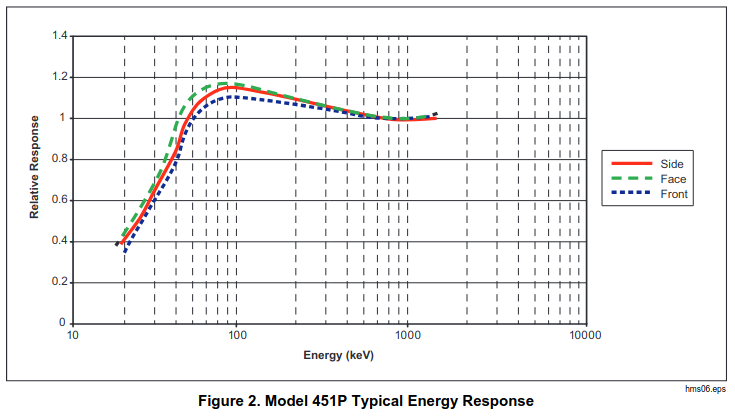
Do these devices have any angular dependence? We don’t know since we were not provided with angular response as shown below for the 451P.
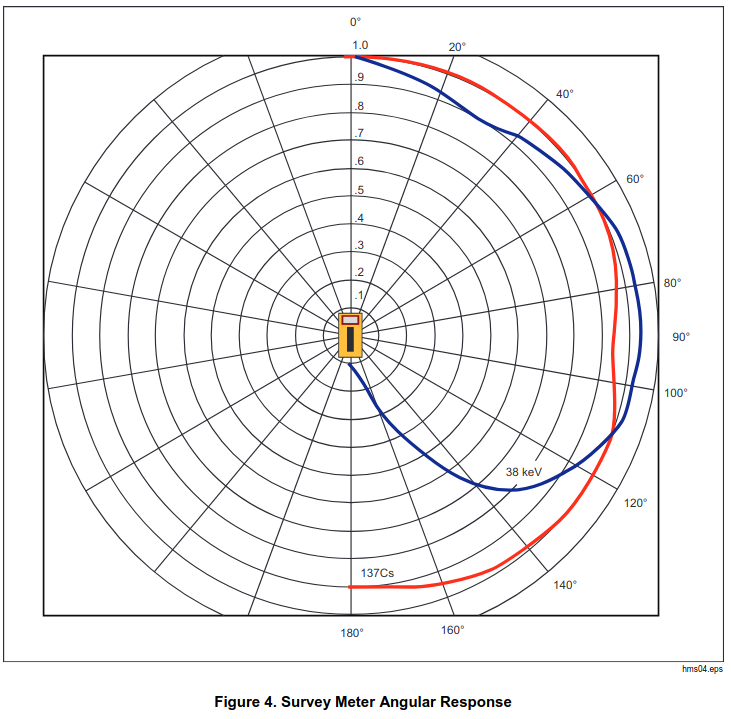
Obviously these devices lack calibration by metrology labs.
Answer: no, due to unknown response of detector, but can be cross calibrated with other professional instruments for specific sources.
Is it a dosimetry device for radiation safety?
Examples: RadEye G20, Mirion Instadose or TLD with LiF from a recognised and certified dosimetry lab
Therma lumination devices used to assess dose to workers from ionizing radiation have a flat energy response and have gone through the rigorous calibration process of assessing their sensitivity to various types of radiation.
Obviously, the devices do not comply with IEC 60846-1, and do not mention if the specific dose or doserate is appropriately converted to Ambient dose equivalent H*(10) or Personal dose equivalent
Hp(10) and what the measurement errors are for various types of radiation.
Some definitions:
Ambient dose equivalent, H*(d), at a point in a radiation field is the dose equivalent that would be produced by the corresponding expanded and aligned field in the ICRU sphere at a depth, d, on a radius opposing the direction of the aligned field: 𝐻∗(𝑑)
Personal dose equivalent Hp(d) at a point in a radiation field is the dose equivalent in soft tissue at an appropriate depth d, below a specified point on the body: Hp(d). D is set to 10 mm for personal dose.
These devices offer the advantage of immediate readings so you know when you are exposed, just like Mirion Instadose, but you don’t know if the error is +/-50% of actual values, since the calculation to yield a sievert or sievert per hour is not traceable and calibrated.
The instruments above are limited to a maximum of 3 MeV and as such cannot be used for those who work with LINAC, although I would expect the energy of scattered radiation from the main beam of a LINAC to be much lower than the energy of the main beam.
There is no mention anywhere of intercomparison to other dosimetry labs, ISO/IEC 17025:2017 certification, source of reference standard and traceability, range of calibration/verification, resolution of the instrument and its allowable error, all typical values of professional instruments.
Answer: No
Is it a large area detector or handheld radio isotope identifier?
example: tripwire https://inl.gov/feature-story/tripwire-leading-the-way-for-radiation-detection/ , or network array of detectors for example https://radiation.dli.mlsi.gov.cy/ or handheld identifier like the SAM-940+
Many people use these badger devices, along with the GPS data from their connected smartphones to plot radiation maps of various places (https://map.radiaverse.com/), however, several limitations come to mind.
We do not know for sure how to identify specific rare radioactive sources since the built-in database of radionuclides is rather limited ( but can be supplemented) and even when the radionuclide exists in the database we may not have the FWHM or sufficient counts to separate one from another nearby or from noise. Furthermore, if we do identify something we do not know if it is a permanent radioactive contamination at that location or a fleeting car carrying radioactive sources or a patient from nuclear medicine, raising nuclear safety and privacy concerns.
A measurement is only as good as the uncertainty around it. Spurious and unreliable measurements conducted in dubious and sketchy fashion are of no use. Too many false positives. How you use it, describing Standard Operating Procedures, according to Good Lab Practice, is routine in hospitals, labs and organisations, but not for individual enthusiasts. If a whole country is mapped, by thousands of individuals, all using various different devices, without calibration, in their own preferred way, then the radiation map is at best misleading, at worst creating more work for the appropriate authorities.
Answer: No, since the average user lacks the necessary skills and experience to obtain and analyze accurate data, always considering privacy concerns of patients and the public.
Is it an X-ray unit tester (for QC)?
Example: Raysafe X2/Unfors or Mako by RTI
Can these devices measure X-rays produced by X-ray units in radiology for example fluoroscopy or mammography units? Can we reliably measure Gy, mGy/s, kVp, or HVL (Half Value Layer)?
No, as the number of photons generated even at the lowest kVp and mAs is so high that it saturates the detector.
With a low sensitivity of 0.1% and around 1,577,000,000photons/cm2 from a typical x-ray tube for a chest X-ray procedure with 110 kVp and 3 mAs and 4mm Al filtration we get a CPS on the 1cm^2 surface of the detector of 1.57 million which is more than the max CPS of the radiacode and similar devices are capable of.
In addition the devices lack IEC 61674 and IEC 61676
Answer: No
Conclusion
Consumer-grade scintillation detectors like the Radiacode and Atom-Swift offer an exciting opportunity for enthusiasts and educators to explore radiation detection. If you live close to war torn regions, or radiation contaminated regions, or maybe you are expecting WW3 to start soon, then the device may come in handy to check for contaminated food/areas.
However, the limitations of these new devices make them unsuitable for professional applications requiring precision via rigorous calibration, traceability, and compliance to standards. For serious work, investing in high-quality, calibrated instruments is essential.
If your goal is to learn and experiment, these gadgets can be both educational and entertaining—but approach them with realistic expectations. By understanding their capabilities and limitations, users can make informed decisions and fully appreciate the potential of these fascinating tools. As technology evolves, new, cheaper, and bigger crystals become available, these devices may play an even greater role in bridging the gap between education, hobbyist exploration, and professional applications.
